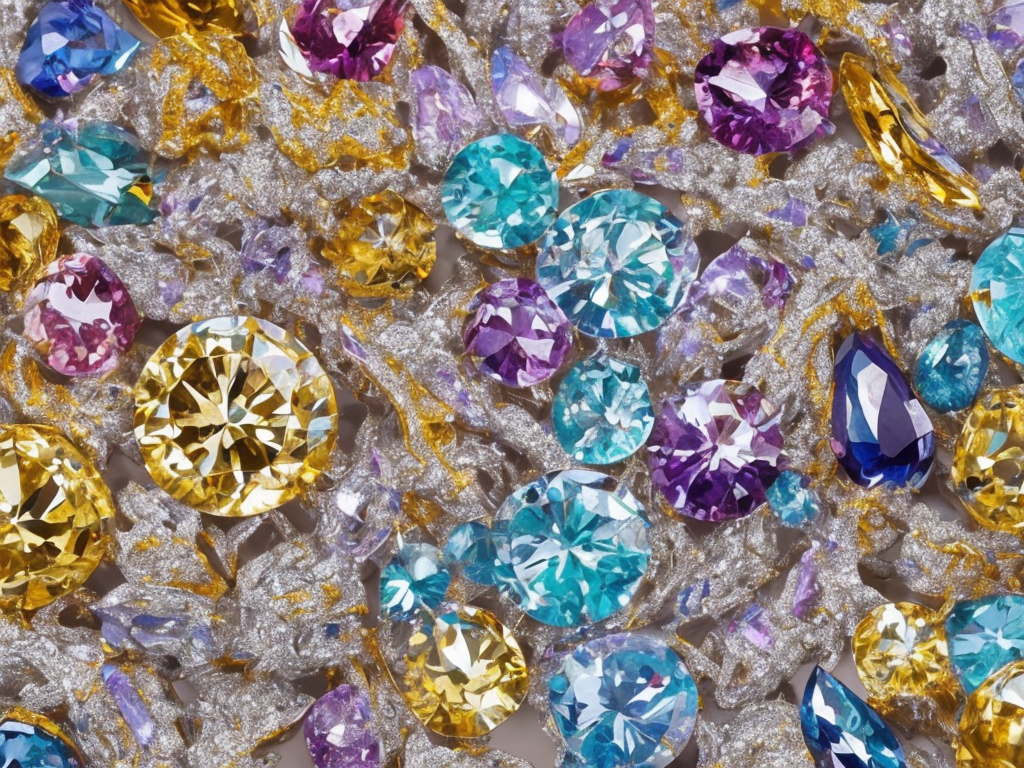
When it comes to precious metals and gemstones, two terms that are often used interchangeably but are actually quite different are carat and karat. While it may seem like a minor distinction, understanding the difference between these two terms is important in the world of jewelry, as it can affect the value and quality of a piece. So, what exactly is the difference between the two terms, and how do they impact the jewelry industry?
Carat
The word “carat” refers to the weight of a gemstone, such as a diamond or a sapphire. One carat is equal to 200 milligrams, or 0.007 ounces. This measurement is standardized and is used throughout the world to determine the weight of gemstones.
While carat is the most well-known measurement used for gemstones, it is important to note that it is not the only one. Gemstones are also measured in points, with one point being equal to one-hundredth of a carat. For example, a half-carat diamond would weigh 50 points.
As one might expect, the weight of a gemstone greatly influences its value. In general, larger gemstones are rarer and therefore more valuable than smaller ones. However, other factors such as color, cut, and clarity will also impact the value of a gemstone.
Karat
The word “karat,” on the other hand, refers to the purity of gold. Gold is a soft, malleable metal that is often mixed with other metals such as copper, silver, or zinc to make it stronger and more durable. The amount of pure gold in a piece of gold jewelry determines its karatage.
Karatage is expressed as a number followed by the letter “K.” The most common karatages for gold jewelry in the United States are 14K, 18K, and 24K.
• 14K gold is 58.3% pure gold, with the remaining 41.7% made up of other metals.
• 18K gold is 75% pure gold, with the remaining 25% made up of other metals.
• 24K gold is 99.9% pure gold, with only a small amount of other metals mixed in for durability.
It is important to note that while higher karat gold may be more pure, it is also more likely to scratch, tarnish, or bend. For this reason, many people prefer lower karatages for everyday wear.
The Impact on the Jewelry Industry
Understanding the difference between carat and karat is crucial in the jewelry industry, as it can greatly impact the value and quality of a piece. For example, a one-carat diamond may be more valuable than a two-carat diamond if the one-carat diamond has a higher quality cut, color, and clarity. Similarly, a 14K gold piece of jewelry may be more durable and better suited for everyday wear than an 18K or 24K gold piece.
In addition, some jewelry pieces may incorporate both carat and karat measurements. For example, a gold ring with a one-carat diamond may be stamped with markings such as “14K” and “1 ct” to indicate both the purity of the gold and the weight of the diamond.
It is also important to note that while carat and karat are standardized measurements, they are not foolproof. There are unscrupulous vendors who may try to misrepresent the weight or quality of a gemstone or the purity of gold in a piece of jewelry in order to charge a higher price. For this reason, consumers should always purchase jewelry from reputable, trustworthy vendors who can provide documentation and certifications for their pieces.
In Conclusion
While carat and karat may seem like similar terms, they are actually two very different measurements with a significant impact on the jewelry industry. Carat refers to the weight of a gemstone, while karat refers to the purity of gold. Understanding these distinctions can help consumers make informed decisions when purchasing jewelry, ensuring they get the best value for their money.
 Self-Instruct
Self-Instruct